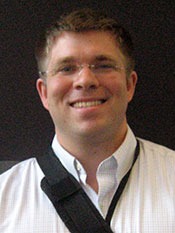Program Information
Correction Factor Measurements for Multiple Detectors Used in Small Field Dosimetry On the Varian Edge Radiosurgery System
S Tanny*, D Matthew , N Sperling , E Parsai , University of Toledo Medical Center, Toledo, OH
Presentations
TH-CD-304-5 (Thursday, July 16, 2015) 10:00 AM - 12:00 PM Room: 304
Purpose: Accurate small field dosimetry remains a challenge to the clinical physicist. Choosing the appropriate detector and determination of correction factors continue to be an area of active research. The purpose of this study is to measure the output factors for a dedicated stereotactic accelerator using multiple dosimeters designed for use in small fields and evaluate correction factors relative to measured factors using a scintillating fiber.
Methods: Four micro-ionization chambers, a plastic scintillation detector (PSD), and a semiconducting diode were used to measure output factors for a Varian Edge linear accelerator. Field sizes ranging from 6x6 to 0.6x0.6 cm2 were measured in a water phantom at 10 cm depth for 100 cm SSD. All micro-ionization chambers were mounted in both vertical and horizontal configurations. Fields were normalized to the output at 5x5 cm2 as measured with a compact ionization chamber. Output correction factors were calculated as the ratio of a detector response relative to the scintillating fiber response for clinical field sizes.
Results: Ionization chambers consistently under-responded relative to the scintillating fiber for small fields. Vertically mounting the micro-ionization chambers reduced the magnitude of the necessary correction factor. Correction factors for the micro-ionization chambers ranged between 1.1 and 1.2 for the smallest field size at all energies. We measured a correction factor of 0.893 for the diode at the smallest field size. Micro-ionization chamber measurements were within 1% of published values, while the diode demonstrated agreement to within 4%.
Conclusions: The W1 scintillating fiber can produce accurate and consistent ratios of dose to water for non-standard fields, which can be used to measure correction factors for various detectors used in a clinical setting. This can allow for comparison of correction factors measured in identical conditions to previous studies.
Contact Email:


